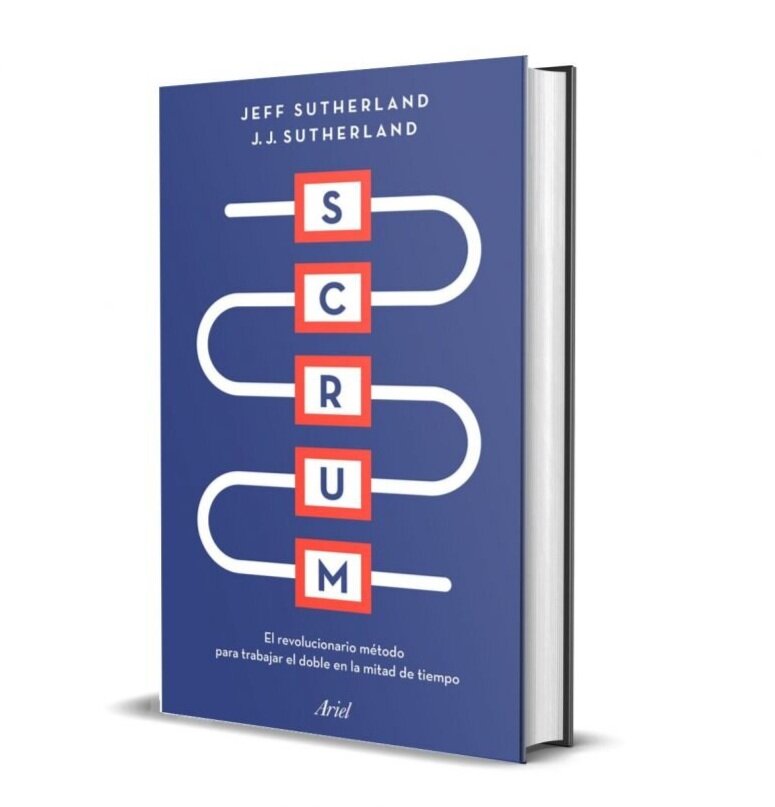Classic books for Market Research:
Scrum. The Art of Doing Twice the Work in Half the Time.
Your company just landed a massive project and you need to start working ASAP because you’re on a tight deadline.
First you get everyone together to plan how you’ll do this project (everybody already knows that this meeting is going to take longer than the calendar invite says....).
You look at the requirements, you start thinking about how you’ll meet them, you make detailed charts that show every step of the project and how long they will take...
Lets stop right here. You’re doing what most people do, and most people do it wrong from the very beginning.
In this blog post, based on Jeff Sutherland’s book “Scrum: the art of doing twice the work in half the time”, Outman Consulting will show you five factors that are crucial to deliver projects on time and on budget by following the Scrum project management approach.
1. Plan Reality, Not Fantasy.
Having a detailed and carefully planned schedule to deliver your project is useful, but remember that it is not reality and not the ultimate guideline to follow. It is just a simple chart in Excel.
Plan every project with the assumption that everything will change. Your resources, the client’s requirements, market conditions - all are liable to change without warning.
After every step, check if what you’ve done gets you closer to the actual goal and delivers value to your client.
Here it’s useful to have a clear definition of what is meant by “done”. Each team member must know what “done” looks like. This requires clear standards that any piece of work has to meet to reach “done” status.
2. Time
Work in short cycles. The sooner you can show something to your client, the sooner you’ll know if you’ve failed or not, and the more time you’ll have to fix any issues. In Scrum, this is called a “Sprint”: a goal that must be completed in a fixed length of time, usually between one and four weeks.
Start with planning how many sprints you think you can achieve in, let's say, one week. Then see how many sprints you actually manage to achieve (remember, plan reality not fantasy) and adjust your deadline to your real working speed.
Sprints become even quicker with daily “stand-ups”. These are meetings of 15 minutes or less (if it takes longer, you’re doing it wrong) where the team gets together and everybody says:
a) what they did yesterday to get the sprint done.
b) what they will do today to get the sprint done.
c) what’s getting in their way.
That’s it. Simple and easy.
3. Priorities.
“Everything is important.”
How many times have you heard that from a client?
Well, if you apply the Pareto principle to project management you’ll find that 80% of the value in any piece of work comes from 20% of the features. Remember this when prioritizing your tasks, because not everything is important. Identify what will bring the biggest business impact and what’s the most important part from your customers point of view (don’t guess! Ask them).
This way you keep your work effective and your clients happy.
4. Teams.
The best teams have three things in common: purpose, autonomy and cross functionality. Give your teams a goal which can be achieved together, the power to make their own decisions and empower them with the skills and resources needed to deliver the project.
Also, keep teams small. Scrum works best in smaller teams, from 3 to 9 people.
5. Happiness.
But none of the above will create a winning team if its members are unhappy.
In fact, we should aim even higher. We should want our teams to thrive.
How? Well, it’s a combination of employee autonomy, company transparency and quick and direct feedback. Not only is this good for the employees, but it helps the company and its clients.
Research shows that happy teams are more committed, take fewer sick days and are more satisfied with their jobs. Ultimately, when done well, Scrum helps people thrive in their jobs, and thriving people deliver projects on time and on budget.
Talk to us to find out how we can help you.

